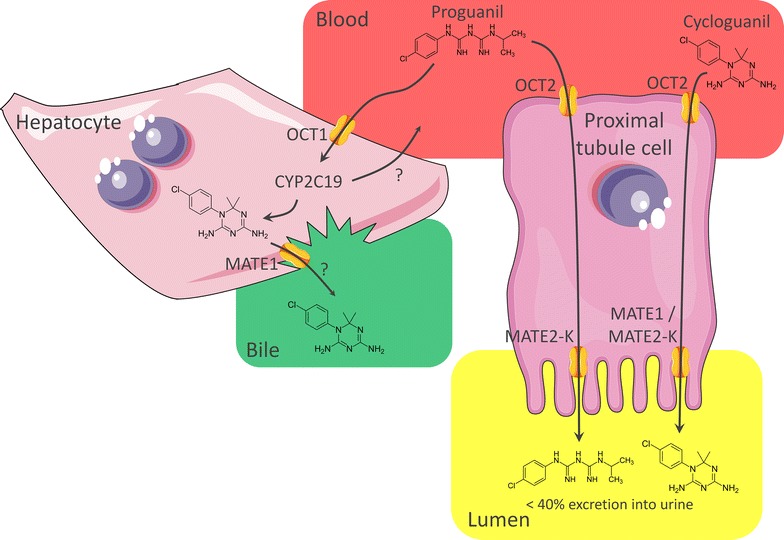Fig. 4.

Schematic of proguanil transport and metabolism. Our results suggest PG as substrate of OCT1, which is probably involved in uptake of this compound into hepatocytes, where it is converted to its active metabolite CG by CYP2C19 [22]. We further showed that PG is a substrate of the proximal tubule transporter OCT2 and MATE2-K, which might contribute to the excretion of < 40% unchanged PG into the urine [39]. In addition, CG was suggested to be a substrate of OCT1, OCT2, MATE1, and MATE2-K
